House of Choi Champan (최참판댁 한옥숙박시설)
18.5Km 2024-12-19
75 , Pyeongsari-gil, Hadong-gun, Gyeongsangnam-do
+82-10-2086-5330
House of Choi Champan is a hanok stay in Pyeongsa-ri, Akyang-myeon, where the Seomjin River flows down from Jirisan Mountain, Jeollanam-do. The accomodation is in several different configurations: the two-storey Ilyeongjae and Wolyeongjae are both rented out as houses; Yeonhajae and Hoeramjae, which are single-storey with numaru(a raised open floor); while Unrakjae and Hoegyeongjae have several rooms with bathrooms, each rented out. Only the "Hoegyeongjae-1" room is equipped with Numaru. Cooking strong-smelling food in guestrooms is not allowed.
Pyeongsari Field (평사리들판)
18.6Km 2022-08-26
Pyeongsari-gil, Hadong-gun, Gyeongsangnam-do
+82-55-880-2651
Pyeongsari Field was created by Seomjingang River flowing through the canyon which attracted people to form a village. The field served as the central farming field and fed the villagers for many years and appeared as a setting in Park Kyongni's novel "Land." Pyeongsari field is one of the largest fields found along Seomjingang River, boasting a size of 2,743,801 ㎡.
Choi Champandaek (House of Choi Champan) (최참판댁)
18.7Km 2021-12-16
66-7, Pyeongsari-gil, Hadong-gun, Gyeongsangnam-do
+82-55-880-2651
The House of Choi Champan is known as the setting of the famous novel "Toji" ("The Land") by noted novelist Park Kyongni. Located in a small folk literature village in Agyang-myeon, Pyeongsa-ri along the Seomjingang River at the foot of Jirisan Mountain, Choi Champandaek consists of fourteen hanok (traditional Korean house) buildings.
Also used as the main set of the drama version of "Toji" (2004), Choi Champandaek gives visitors a look at the life of Korean people in the late Joseon era. The house has not only made its appearance in many films, but is also a valuable cultural asset of Hadong-gun.
The Daecheong Maru (wooden-floored hall) connected to the Sarangchae (men’s quarters in a hanok) offers a wide view of the vast field of Pyeongsa-ri and gives an opportunity to meditate and reflect while appreciating the beautiful surroundings. Located in the vicinity are numerous tourist attractions including the Pyeongsari Literature Center, Hwagae Market, and Ssanggyesa Temple. During fall season every year, Choi Champandaek hosts the Toji Literature Festival.
Seomjingang Train Village (섬진강기차마을)
18.8Km 2023-03-17
232, Gichamaeul-ro, Gokseong-gun, Jeollanam-do
+82-61-362-7461
Since its development in April 1999 as a part of government efforts to boost regional tourism, Seomjingang Train Village has established itself as a popular attraction in Gokseong. A replica of the region's old steam engine train runs 10 kilometers between the old Gokseong Station in Seomjingang Train Village and Gajeong Station. The train runs along the old tracks at a moderate speed, allowing passengers to enjoy the scenic view along the tracks.
Gokseong International Rose Festival (곡성세계장미축제)
18.8Km 2025-07-11
232 Gichamaeul-ro, Ogok-myeon, Gokseong-gun, Jeollanam-do
+82-61-360-8471
The Gokseong International Rose Festival is a vibrant spring celebration featuring 1,004 varieties of roses, including rare European species and famous roses from around the globe. Held at the landmark Gokseong Train Village, the festival is filled with the romantic fragrance of roses.
Chaewondang (채원당)
18.8Km 2024-12-23
217-28 , Gichamaeul-ro, Gokseong-gun, Jeollanam-do
+82-10-6800-6600
Chaewondang is a hanok stay next to the Seomjingang Train Village in Gokseong-gun, Jeollanam-do. Its Sarangbang guestroom is suitable for one family while the Anchae and Yegaheon rooms are for large families or group travelers. The grassy yard contains flower beds and a jangdokdae or storage jar stand, and has scenic views over surrounding rice fields and countryside. If pre-booked, breakfast can include local specialties such as marsh snail stew and spicy beef soup. Various experience programs such as hanbok wearing and local road biking are offered, while visitors get discount tickets for riding the Seomjingang train, horse riding and other amenities.
Jirisan Manbokdae Peak (지리산 만복대)
19.1Km 2021-02-05
Sandong-myeon, Gurye-gun, Jeollanam-do
+82-61-780-7700
Manbokdae Peak in the west soars at the boundary between Sandong-myeon, Gurye-gun and Namwon-si at 1,433.4 meters above sea level. ”Man” means “full of something” and “bok” means “fortune.” Like the name, Manbokdae is considered as a fortunate mountain with great views as it is surrounded by smooth hills. According to an old story, Manbokdae Peak was chosen as one of the 10 scenic areas, where people come to receive good fortune.
Jirisan History Museum (지리산역사관)
19.1Km 2021-06-15
1438, Hwagae-ro, Hadong-gun, Gyeongsangnam-do
+82-55-880-2954
Jirisan History Museum is located within Jirisan National Park at the start of the hiking course to Byeoksoryeong Pass. Rather a small museum, it provides detailed information about the history of North Korean partisans and the routes that they took throughout the mountain during the Korean War. The museum also exhibits the war relics, lifestyle of the mountain villagers and local produce of Hadong.
[Hadong Pak Kyongni Toji-gil Trail 1] Seomjingang Pyeongsa-ri Park to Hwagae Market ([하동 박경리 토지길 1코스] 섬진강 평사리공원~화개장터)
19.1Km 2024-02-08
Agyang-myeon, Hadong-gun, Gyeongsangnam-do
Hadong Pak Kyongni Toji-gil Trail 1 offers a scenic route around the Pyeongsa-ri fields, famously depicted in the novel Toji (The Land) by prominent Korean novelist Pak Kyongni. Spanning 18 kilometers from Pyeongsa-ri to Hwagae Market, this trail allows visitors to stroll alongside the Seomjingang River, immersing themselves in the world of the novel. Additionally, it is celebrated as a magnificent spot for cherry blossom viewing in spring.
Pyeongsari Park (평사리공원)
19.4Km 2022-08-22
3145-1, Seomjingang-daero, Hadong-gun, Gyeongsangnam-do
+82-55-883-9004
Situated along Seomjingang River between Gurye and Hadong, Pyeongsari Park was built for the enjoyment of summer tourists to the area. In addition to the beautiful river, the park is home to campgrounds, numerous shaded rest spots, basketball courts, soccer fields, and an abundance of parking space. Decorated with Jangseung (totem poles, which used to be set at the entrance of villages), the spacious park is full of excellent amenities: barbecue grills, benches, drinking fountains, and clean bathrooms. The sandy banks of the river offer a unique opportunity to catch marsh clams.
Pyeongsari Park and its nearby attractions appeared in Toji (The Land), the epic historical novel by Park Kyung-ni. Visitors may want to tour the group of houses that have been reproduced to commemorate the novel, including the famous Choi Champan House.
Nearby attractions include Hwagae Market, Ssanggyesa Temple, and Seomjingang Maehwa Village, host of the Gwangyang Maehwa Festival.
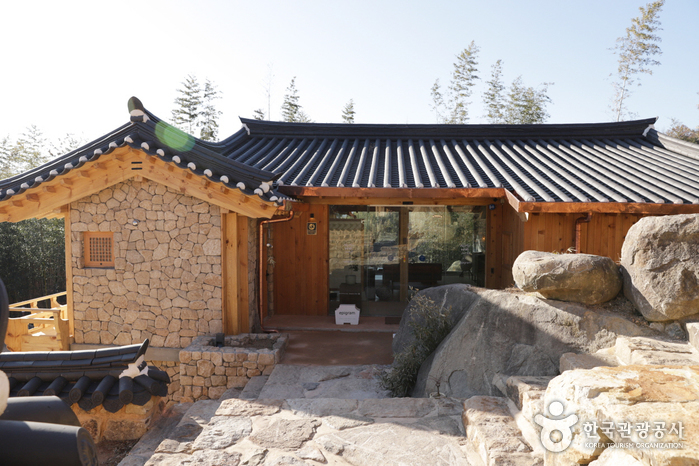
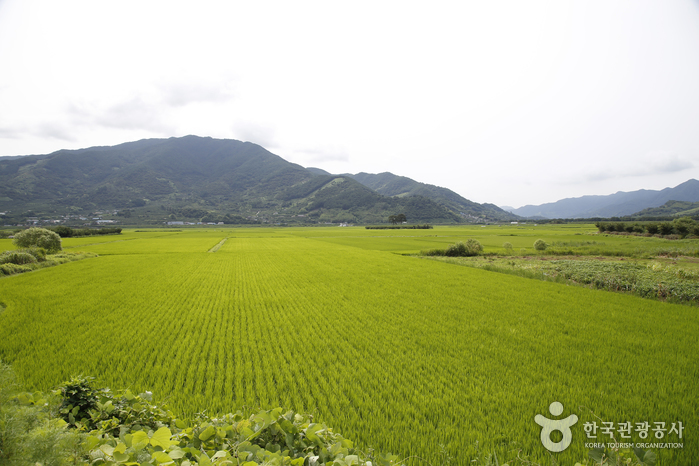
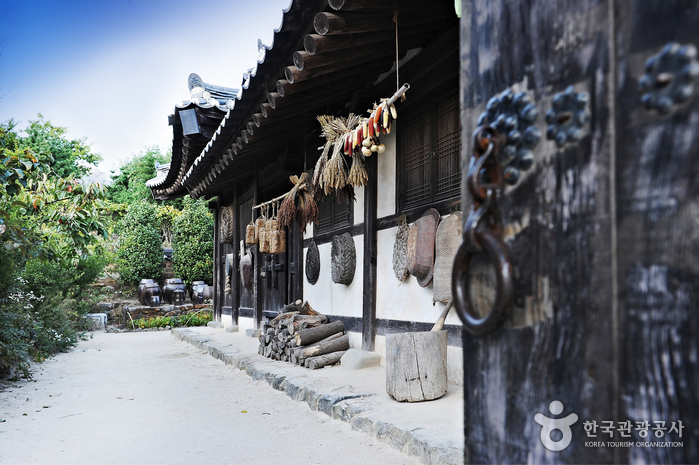
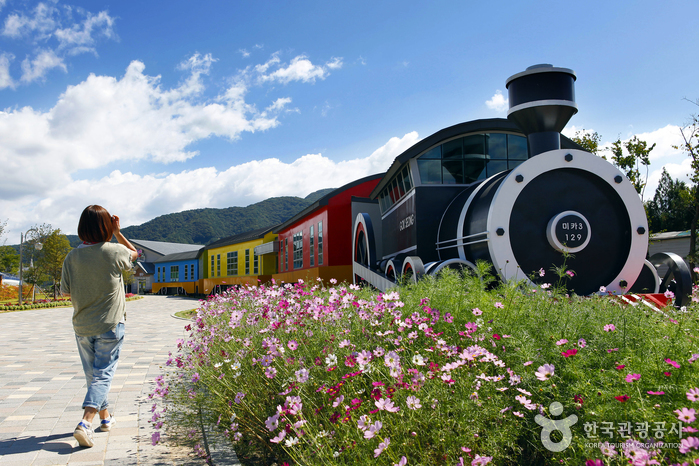
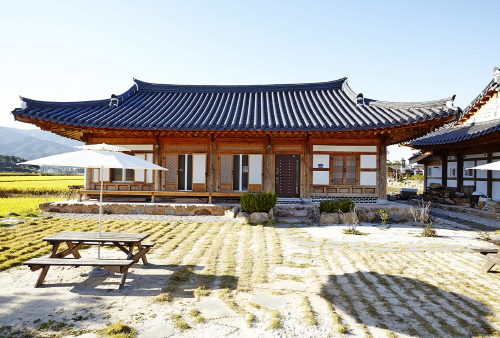
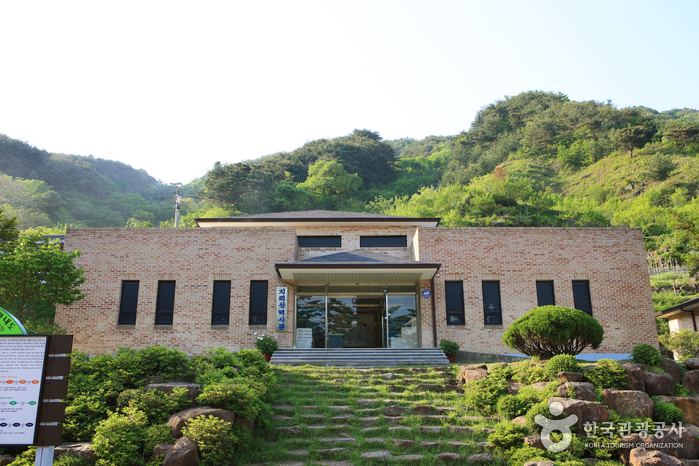
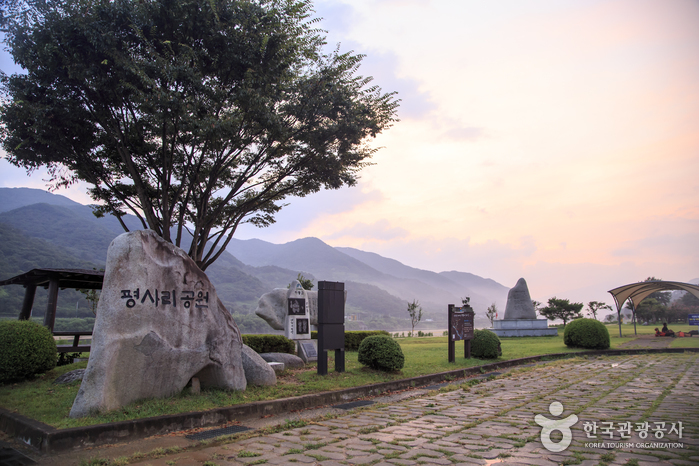
 English
English
 한국어
한국어 日本語
日本語 中文(简体)
中文(简体) Deutsch
Deutsch Français
Français Español
Español Русский
Русский